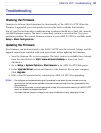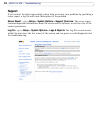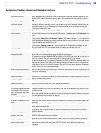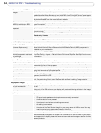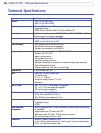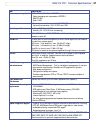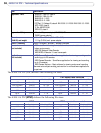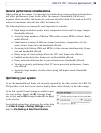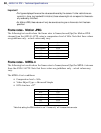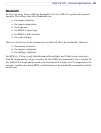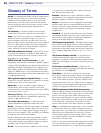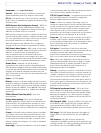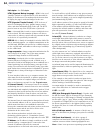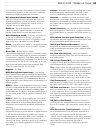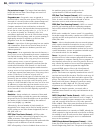
59
AXIS 214 PTZ - Technical Specifications
General performance considerations
When setting up the camera, it is important to consider how various settings and situations
will affect performance. Some factors affect the amount of bandwidth (the bit rate)
required, others can affect the frame rate, and some will affect both. If the load on the CPU
reaches its maximum, this will also affect the frame rate.
The following factors are among the most important to consider:
• High image resolutions and/or lower compression levels result in larger images.
Bandwidth affected.
• Access by large numbers of Motion JPEG and/or unicast MPEG-4 clients. Band-
width affected.
• Simultaneous viewing of different streams (resolution, compression, etc.) by
many clients. Frame rate and bandwidth affected.
• Accessing both Motion JPEG and MPEG-4 video streams simultaneously. Frame
rate and bandwidth affected.
• Heavy usage of event settings affects the CPU load. Frame rate affected.
• Enabled motion detection. Frame rate and bandwidth affected.
• Heavy network utilization due to poor infrastructure. Bandwidth affected.
• Viewing on poorly performing client PC lowers perceived performance. Frame
rate affected.
• Access by large number of audio clients using full-duplex mode. Bandwidth
affected.
Optimizing your system
To see the bandwidth and frame rate currently required by the video stream, the AXIS 214
PTZ provides a tool that can be used to display these values directly in the video image.
To do this, special format strings are added as part
of a text overlay. Simply add #r (average frame
rate in fps) and/or #b (average bandwidth in Kbps)
to the overlay.
For detailed instructions, please see the online help
for Video & Image > Overlay Settings, and the
help for File Naming & Date/Time Formats.



